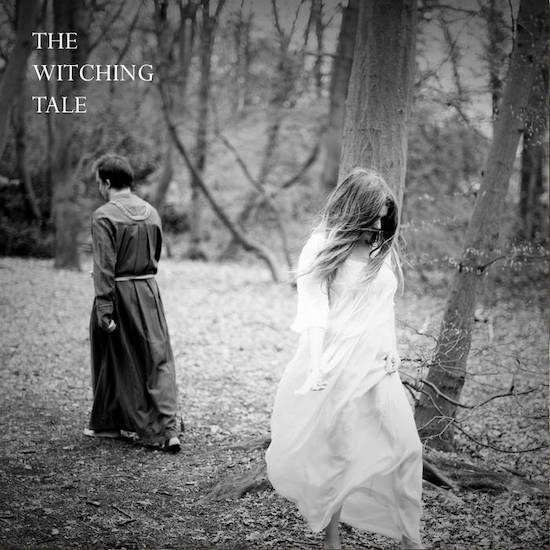While we’ve all been fretting about masks, tests, and pings, something wild and free has been growing in the woods. Katharine Blake is a singer known for her entrancing voice, used to great and contrasting effect in Mediæval Bæbes and Miranda Sex Garden. Michael J. York is to be found in any number of pioneering alternative music settings, from Coil to the Utopia Strong, via Urthona and Téléplasmiste. Together, they have fused their musical interests into something dark, magical, and strange (or perhaps strænge). Behind an album cover in which the pair sport cowls and sacrificial dresses, they have recorded a set of songs they describe as “a black celebration of the magical power of eroticism – and of its peril.” It’s like being transported to a parallel timeline in which Gregorian chant, acid folk, and Arabic classical music have fused to form the uncanniest music imaginable.
If we had any doubts about what Blake and York are channelling, a chanting snippet of Magnet’s ‘Fire Tale’ from the Wicker Man soundtrack makes a teasing appearance on ‘Roundelay’, a song that slips in an out of focus through a haze of disconcerting musical layers, like an intoxicating mist. York plays a remarkable array of instruments on ‘The Witching Tale’, including the tanpura from India, the Ethiopian begena, and the Arabic rebab (all stringed instruments), as well as a Middle Eastern woodwind instrument called the duduk. Charlie Cawood plays lyre, zither, and guzheng (a sort of Chinese zither). Robin Blick adds a full range of horns, from saxophone to flugelhorn. The credits also include Blake’s twelve-year old daughter, who has an eerie soprano voice, and Kavus Torabi “on amyl.”
Whatever the recipe, the music they’ve produced is all-enveloping, and gets weirder with every listen. The intensely layered production and unfamiliar instruments create a powerful sense of the uncanny. There is little telling what will come next, and little choice but to surrender to the power of the songs. The opening track, ‘The Beckoning’, calls us into the circle with a swirl of sound that involves some, possibly all of these, and features Blake singing what is apparently eighth-century erotic verse, in Arabic, by an ancient female poet, as she also does on ‘Dahna’, to a hollow, dance of death beat. Later, she retells the story – in English – of a kelpie’s bewitchments while a synthesiser, apparently recorded echoing around a nautilus shell, morphs into some kind of medieval recorder. On ‘The Falling Garden’, in a language I am unable to identify, Blake sings “an enchantment” in minor keys that wrestle alarmingly with beguiled, buzzing strings.
The pairing of Blake’s commanding, siren-like vocals and York’s meticulously unhinged soundworlds is magic indeed. Although the album recalls the sound of folk revival pioneers like Mellow Candle and Trees, it goes far beyond anything attempted in the 1970s in its melding of musics and cultures. The closest comparison is with Comus, who were often terrifying and certainly never fey. The Witching Tale carries similar levels of menace and allure. It is on a different plane, musically and astrally, inhabiting a space all of its own. These are inspired songs, which require repeated listening to decode their messages and unravel their tangled skeins. They are also immensely enjoyable, guaranteed to open the doors to another dimension.


